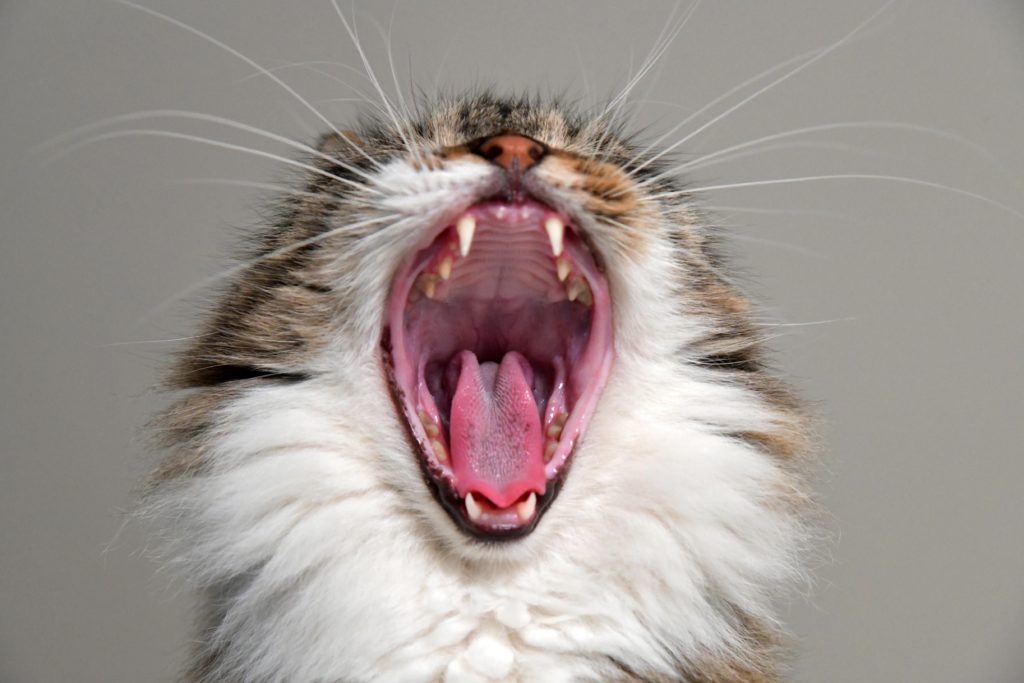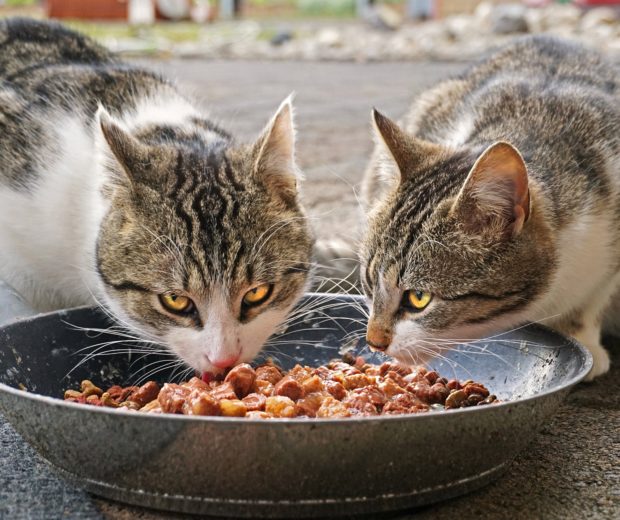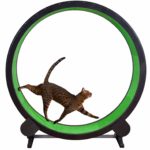Can my cat be vegan?
Obligate Carnivores
Cats are obligate (strict or true) carnivores, meaning they require certain nutrients that they cannot synthesize which are only found in meat.
The very name carnivore means devourer of flesh. Cats large and small, wild and domestic need to eat meat as their main source of nutrients.

Chromosomal Evidence
Domestic cats have 38 chromosomes (strands of DNA in a cell’s nucleus that carry genes) while dogs have 78. This demonstrates that cats ceased evolving further after reaching their obligatory carnivorous status, genetically. They never evolved to incorporate plant materials into their diets.
Teeth
Another difference between carnivorous carnivores and omnivorous carnivores such as dogs and bears is the type of teeth present. Cats have 30 teeth while dogs have 42. Dogs have more molars for grinding and chewing plant matter while in cats, the upper third premolar and lower molar are adapted as carnassial teeth, suited to tearing and cutting through flesh and bone. These carnassial teeth have no flat crowns for grinding.
Meat is digested in the stomach, so there is no need to chew it.

Tongue, Jaws & Musculature
The cat’s tongue is covered with horny papillae, which help to rasp meat from the bones of their prey. For the most part, the jaws of the cat only move vertically. This prevents them from being able to chew, but makes it easier for their powerful jaw muscles to hold struggling prey.
Digestive Enzymes
Cats, unlike omnivores such as dogs, do not have the enzyme, amylase, in their saliva which begins the breakdown of carbohydrates in the mouth. This is required since carbohydrate metabolism takes a long time.
Cats utilize the enzyme hexokinase for the metabolism of low-glucose loads in their diet. They lack the ability to metabolize high-glucose loads.
Cats only possess hepatic (liver) enzymes to metabolize a high-protein diet and in lieu of this type of continuous high-meat-protein diet, will start to breakdown their own muscles and organs to achieve this.
Vision & Hearing
Cats’ eyes face forward, allowing for binocular vision for hunting and they have excellent night vision allowing them to hunt their prey, predominantly small rodents, in very low light.
Cats also have excellent depth perception which allows them to move accurately and consistently based on the location of their prey and it is also the reason they are adept at climbing and jumping.
Cats can hear very high pitched sounds such as those emanating from small rodents. The hearing range of the cat extends from 48Hz to 85kHz, giving it one of the broadest hearing ranges among mammals. For comparison, the human hearing range is approximately 20Hz to 20kHz.
Whiskers & Claws
A cat’s whiskers aid in hunting by moving forward to feel for prey within reach when either the prey is too close or can’t be seen by the cat, in bright light or low light. The whiskers also pick up slight vibrations alerting it to prey activity.
Cats have retractable claws for chasing after, grasping, and holding prey.
Absolute Nutrient Requirements
Cats have a special need for the amino acid, taurine, which is essential for the formation of bile salts to digest fats and absorb fat soluble vitamins,. Taurine is essential for healthy eyes, and heart function. Cats are unable to manufacture taurine themselves, therefore, it must be in their diet. Meat is the main source of taurine.
Cats cannot synthesize vitamin D from sunlight and therefore must receive their vitamin D through dietary means (animal products). Meat, eggs, and fish oil are excellent sources while the only vegan source is mushrooms.
Vitamin A occurs naturally, only in animal tissues (meat). Cats cannot create vitamin A and therefore they need it from their diet.
Cats also require an essential fatty acid, arachidonic acid, found only in meat. They cannot convert linoleic acid provided by plant sources into arachidonic acid.
Digestion
The cat’s intestine is shorter in proportion to its body size, and the design of its entire digestive system is more suited to a diet of etremely digestible meat protein and fat for a fast transit time as opposed to fibrous plant material for a prolonged digestive time.
Taste Receptors
A cat’s sense of taste differs from other mammals in one important way –the sweet receptors on their tongues are nonfunctional meaning they can’t recognise a sweet taste. This mutation likely helped cats evolve toward all-meat diets.
Water Requirements and Kidney Disease
Cats get most of their water from their food. Dry food is missing the most important nutrient, water. Many cats can and will live a long life on a dry or dry/canned diet, however, we don’t know which cats are genetically able to do so until it’s too late, typically after being diagnosed with chronic renal (kidney) disease.
By the time most cats present with chronic renal disease, they have lost more than 70% of kidney function. This is a terminal condition. Cats have a low thirst drive due to their desert adaptation and do not ingest enough free water to compensate for the lack of water in their diet, and are therefore, chronically dehydrated.
Summary
Cats, through desert adaptation, require water as a component of their food. They also lack the metabolic pathways to efficiently process plant material, thus defining them as obligate carnivores; their food should consist only of meat, fat, bones, and organs. These are two very simple yet fundamental facts of feline nutrition.
Many feline diseases such as diabetes, obesity, urinary tract disorders, chronic renal disease, and irritable bowel syndrome can be directly attributed to low moisture, low-meat-protein, and high-carbohydrate levels that plague many of today’s commercially produced cat foods. Many cats survive on these dry, supplemented, plant-based diets but they do not thrive.
Reference Curtis, Lynn. Feline Nutrition: Nutrition for the Optimum Health and Longevity of your Cat .







